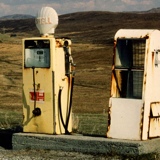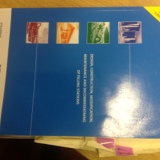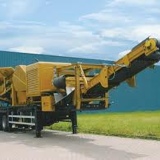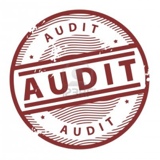Information
-
Document No.
-
Audit Title
-
Client / Site
-
Conducted on
-
Prepared by
-
Location
-
Personnel
-
Name of Site
-
Permit No
-
Officer Name
- Ciara Daly
- Paul Swift
- Bronagh Carney
-
Date
PERMIT CONDITIONS
-
The above named company is permitted to operate an installation unloading of petrol into stationary storage tanks and filling of vehicle petrol tanks at the service station above, subject to compliance with the following conditions.
-
No of Petrol Storage Tanks
-
No of Petrol Dispensing Nozzles
-
1. Vapours displaced by the delivery of petrol into storage installations at service stations shall be returned through a vapour tight connection line to the road tanker delivering the petrol. Unloading operations may not take place unless the arrangements are in place and properly functioning, subject to conditions 3,4 and 5.
-
2. The Operator shall implement the schedule of preventative maintenance with an appropriate competent authority as outlined in the Permit application.
-
3. All reasonably practicable steps shall be taken to prevent uncontrolled leaks of vapour from vents, pipes and connectors from occurring. The regulator shall be advised without delay of the circumstances of such a vapour leak if there is likely to be an effect on the local community and in all cases such a vapour leak should be recorded in the log book required under Condition 24. In this Condition and in Condition 4 a vapour leak means any leak of vapour excepting those which occur through the vent mentioned in Condition 11 during potentially hazardous pressurisation.
-
4. The Operator shall advise the Regulator of the corrective measures to be taken and the timescales over which they will be implemented in the event of a vapour leak described in Condition 3.
-
5. Instances of vapour lock shall be recorded in the log book and, under the circumstances detailed in Condition 3, be advised to the Regulator.
-
6. The procedures in Conditions 2 to 5 inclusive shall be reviewed in light of any modifications which occur to the facilities. The Regulator shall be advised of any proposed alteration in operating procedures.
-
7. The vapour collection systems shall of a size and design, as approved by the regulator, to minimise vapour emission during the maximum petrol and vapour flow in accordance with conditions 1 and 8 (i.e.when most tank compartments are being simultaneously discharged). [In the case of existing vapour collection systems, an assessment shall be made of the maximum number of tanks which can be discharged whilst still maintaining the integrity of the vapour collection system.] [See Section 6 of NIPG1/14(VERSION 3)]<br>
-
8. The number of tanker compartments being discharged simultaneously shall not exceed 2,<br>[including/excluding] the diesel compartment[s].<br>
-
9. The connection points on the tank filling pipes and vapour return pipe shall be fitted with secure seals to reduce vapour leaks when not in active use. If apertures are provided on storage tanks for the use of a dipstick, these shall be securely sealed when not in active use.<br>
-
10. The fittings for delivery and vapour return pipes shall be different to prevent mis-connection.<br>
-
11. Petrol storage tank vent pipes shall be fitted with a [pressure vacuum relief valve] [named other device] to minimise vapour loss during unloading and storage of petrol. [The pressure vacuum relief valve shall be sized and weighted to prevent vapour loss, except when the storage tanks are subject to potentially hazardous pressurisation.]<br>
-
12. When connecting hoses prior to delivery, the vapour return hose shall be connected before any delivery hose. The vapour return hose shall be connected by the road tanker end first, and then at the storage tank end.<br>
-
13. Adjacent to each vapour return connection point for the storage tank, there shall be a clearly legible and durable notice instructing "Connect vapour return line before off-loading" or similar wording. The sign shall also refer to the maximum number of tanker compartments which may be unloaded simultaneously in accordance with condition 8.
-
14. If dip testing of storage tanks or road tanker compartments is performed before delivery, the dip openings shall be securely sealed prior to the delivery taking place.<br>
-
15. Road tanker compartment dip testing shall not be performed whilst the vapour hose is connected [See Paragraph 6.13 of NIPG1/14(Version 3).]<br>
-
16. A competent person shall remain near the tanker and keep a constant watch on hoses and<br>connections during unloading. [A competent person is one who has received training in accordance with Section 5 of NIPG1/14(Version 3).]<br> <br>
-
17. All road tanker compartment vent and discharge valves shall be closed on completion of the delivery.
-
18. On completion of unloading the vapour hose shall not be disconnected until the delivery hose has been discharged and disconnected. The delivery hose shall be disconnected at the road tanker end first. The vapour return hose shall be disconnected at the storage tank end first.<br>
-
19. All connection points shall be securely sealed after delivery.<br> <br>
-
20. If the storage tanks or road tanker compartments are dipped after delivery, the dip openings shall be securely sealed after dip testing.<br>
-
21. Manhole entry points to storage tanks shall be kept securely sealed except when maintenance and testing are being carried out which require entry to the tank.<br>
-
22. Petrol delivery and vapour return lines shall be tested at least once every six years Testing shall be by a method agreed with the district council<br>
-
23. The district council shall be given 5 days prior notice of the testing of the vapour containment integrity of the petrol delivery and vapour return lines. Test results/compliance certificates shall be made available to the Council on request.<br>
-
24. [Pressure vacuum relief valves] [Named other devices] on petrol storage tank vents shall be checked for correct functioning, including extraneous matter, seating and corrosion at least once every three years.<br>
-
25. The operator shall maintain a log book at the authorised premises incorporating details of all<br>Maintenance, examination and testing, inventory checking, installation and repair work carried out, along with details of training given to operating staff at the service station. The log book shall also detail any suspected vapour leak together with action taken to deal with any leak,<br>in accordance with Conditions 3, 4 and 5.<br> <br>
-
26. Venting of the petrol vapour shall be through the vent pipes marked X on the attached plan reference document number 4 [See Paragraph 6.7 of NIPG1/14(Version 3)].<br>
-
Add media
-
Add signature












